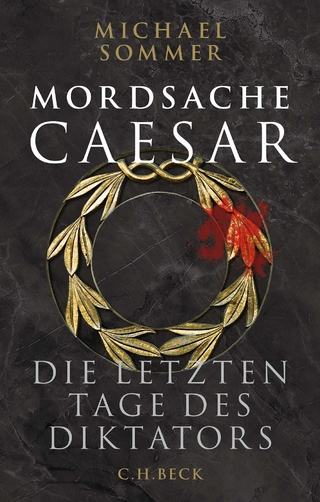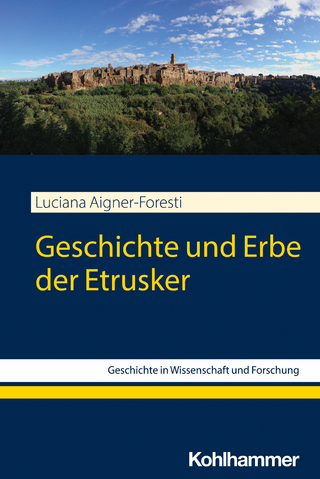
Rocks in Motion
Dakhleh Oasis Petroglyphs in the Context of Paths, Roads and Mobility
Seiten
2024
Oxbow Books (Verlag)
978-1-78925-975-9 (ISBN)
Oxbow Books (Verlag)
978-1-78925-975-9 (ISBN)
An introduction to and analysis of the rich assemblage of petroglyphic rock art in the Dakhleh Oasis from the early Holocene to medieval periods.
Rock art in Dakhleh was produced for perhaps as long as 10 millennia, resulting in the formation of hundreds of sites displaying thousands of images. In some places, petroglyphs form a true melting pot of iconographic creations, elsewhere only isolated depictions appear on rock surfaces. Various rock art traditions, from prehistoric, through pharaonic, Graeco-Roman, and mediaeval, have all added to a tremendous variety of petroglyphs, their formal traits and subject matter.This book is the first ever monograph on Dakhleh Oasis rock art, providing both an introduction to the versatile topic as well as an overview of the current state of research. It is designed as a collection of essays that deal with specific aspects of the research. The reader is offered here not only old and new documentation, much of it previously unpublished, but also a great deal of innovative interpretation.All chapters, although devoted to different case studies, revolve around an all-encompassing concept of landscape of motion. It is argued here that rock art, regardless of its date of origin, was (and is) always involved in certain dynamic contexts. In Dakhleh, the majority of petroglyphs – especially during historical periods – were produced in spatial contexts of paths and routes, and thus by people on the move. It is argued here that various kinds of movement were often a significant factor contributing to the meaning and function of the images. The intention of this book is to explore and unveil such contexts, which may prove somewhat elusive if we focus our analyses exclusively on the representational aspects of rock art. Such a type of integration of rock art, landscape and motion is the major aim of this work, and has hopefully been achieved by merging perspectives and concepts derived from Egyptology, Anthropology, and other social sciences.
Rock art in Dakhleh was produced for perhaps as long as 10 millennia, resulting in the formation of hundreds of sites displaying thousands of images. In some places, petroglyphs form a true melting pot of iconographic creations, elsewhere only isolated depictions appear on rock surfaces. Various rock art traditions, from prehistoric, through pharaonic, Graeco-Roman, and mediaeval, have all added to a tremendous variety of petroglyphs, their formal traits and subject matter.This book is the first ever monograph on Dakhleh Oasis rock art, providing both an introduction to the versatile topic as well as an overview of the current state of research. It is designed as a collection of essays that deal with specific aspects of the research. The reader is offered here not only old and new documentation, much of it previously unpublished, but also a great deal of innovative interpretation.All chapters, although devoted to different case studies, revolve around an all-encompassing concept of landscape of motion. It is argued here that rock art, regardless of its date of origin, was (and is) always involved in certain dynamic contexts. In Dakhleh, the majority of petroglyphs – especially during historical periods – were produced in spatial contexts of paths and routes, and thus by people on the move. It is argued here that various kinds of movement were often a significant factor contributing to the meaning and function of the images. The intention of this book is to explore and unveil such contexts, which may prove somewhat elusive if we focus our analyses exclusively on the representational aspects of rock art. Such a type of integration of rock art, landscape and motion is the major aim of this work, and has hopefully been achieved by merging perspectives and concepts derived from Egyptology, Anthropology, and other social sciences.
Pawel L. Polkowski is a rock art researcher at the Poznan Archaeological Museum and the University of Warsaw in Poland. As the director of the Dakhleh Oasis Project, he has carried out fieldwork in the Western Desert of Egypt. He is also involved in rock art research in Sudan as well as other parts of Egypt.
Foreword
Preface
1. Introduction: Aims, Scope and Theoretical Toolkit
2. A ‘Passage’ Through Time: Routes and Movement in Dakhleh from Prehistory to Modern Times
3. A Circle of Life? Prehistoric Anthropomorphic Petroglyphs and Knowledge of the World
4. Animated Landscape of Animals
5. Pharaonic Rock Art: Negotiating Identities
6. In the Temple of Seth
7. Epilogue: Time to Move on
Bibliography
| Erscheinungsdatum | 30.09.2023 |
|---|---|
| Verlagsort | Oxford |
| Sprache | englisch |
| Maße | 210 x 297 mm |
| Themenwelt | Geisteswissenschaften ► Archäologie |
| Geschichte ► Allgemeine Geschichte ► Altertum / Antike | |
| ISBN-10 | 1-78925-975-4 / 1789259754 |
| ISBN-13 | 978-1-78925-975-9 / 9781789259759 |
| Zustand | Neuware |
| Informationen gemäß Produktsicherheitsverordnung (GPSR) | |
| Haben Sie eine Frage zum Produkt? |
Mehr entdecken
aus dem Bereich
aus dem Bereich


